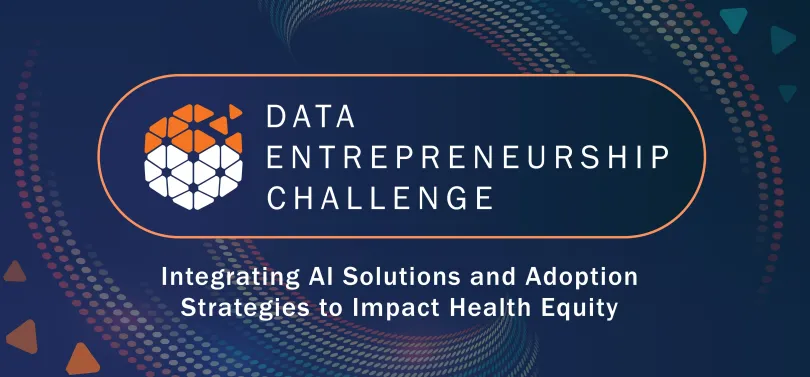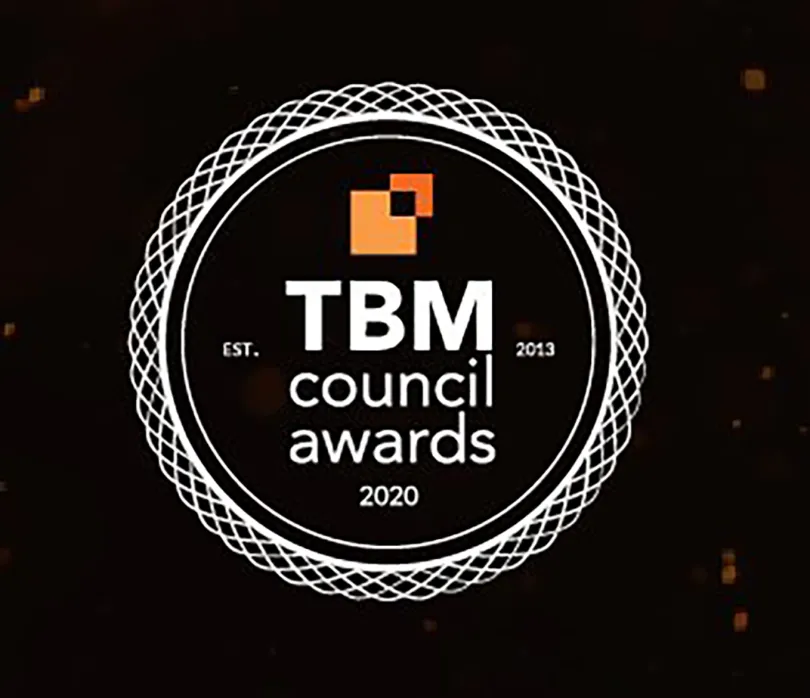
Technical DNA
Building the Digital Enterprise for Next-Generation Sustainment
tDNA™
Modern sustainment requires agility, flexibility, and interoperability. Emerging technologies such as additive manufacturing, virtual reality, and digital twin have transformed sustainment practices. These capabilities rely on a digital foundation, a system and infrastructure that provides the right data at the right time to the right stakeholder. A modern digital enterprise that supports the agile application of new capabilities to improve readiness and reduce costs is now possible.
To fully realize these benefits, the government and its industrial partners must embrace a common and shared vision of this digital enterprise. Unfortunately, standard practices differ within departments, services, supply chains, and individual programs across the federal space. Organizational and functional boundaries can create barriers to implementation that prevent desired benefits from being realized. LMI champions a digital-enterprise approach that emphasizes the total lifecycle and cost of ownership. Our Technical DNA (tDNA™) approach combines digital engineering, lifecycle management, supply chain risk management, and intellectual property (IP) management to ensure that the modern sustainer has the right data at the right time at the right price.
Technical data are descriptive data, models, standards, process descriptions, quality test plans, and other information that represent the physical reality of an object in digital space.
Technical Data-Enabled Capability
Available, accessible, secure, and model-based technical data facilitate the enterprise-wide adoption of emerging technologies.

What is tDNA™ ?
LMI’s tDNA™ vision is for required technical data to be available, accessible, secure, and model based throughout the digital enterprise:
- Available. Program management offices (PMOs) procure model-based data along with equipment and systems as well as appropriate IP rights for its use throughout the lifecycle. Data are available within the PMO’s IT systems, shareable across the enterprise.
- Accessible. No longer stovepiped within acquisition programs or by organizational boundaries, model-based data reside on IT systems that enable enterprise-wide users and stakeholders to access it in real time.
- Secure. Data security best practices are implemented while building the infrastructure required to protect growing repositories of valuable technical data from bad actors.
- Model based. The enterprise manages comprehensive model-based data on a digital thread and, when appropriate, converts legacy technical data into modern 3D formats.
tDNA™ in Every Phase
LMI enables PMOs to realize the benefits of modern sustainment tools, reducing total cost of ownership and improving lifetime readiness. Our internally developed approach prioritizes interoperability and modularity while avoiding obsolescence issues.
-
Pre-Acquisition
- Technical data maturity assessment
- IP assessment and tradespace strategy (continuous through lifecycle)
- Lifecycle value of technical data policies

-
Systems Acquisition and Development
- Technical data delivery verification
- Trusted third party for technical data maintenance
- Product lifecycle data management software selection
- Digital thread activation (machine-to-machine exchange and use)

-
Operations and Lifecycle Sustainment
- Technical data adequacy assessment for sustainment and new technologies
- Technical data modernization strategy
- 2D-to-3D conversion
- Technical data for additive manufacturing, augmented reality, CBM, and digital thread

-

“Innovation in government is best when it marries two thrusts simultaneously: long-standing challenges and opportunities presented by new technologies and methods. Technology for technology’s sake is usually a costly mistake.”
Bruce Kaplan
Principal, Logistics Strategy and Integration
Related Content
Explore All-
Read more on 'OrgIQ™: Optimize Organizational Performance '
 Insights
InsightsOrgIQ™: Optimize Organizational Performance
With OrgIQ™, face the future with confidence by preparing your organization to adapt, evolve, and excel, no matter what lies ahead.
-
Read more on 'Unleash American AI Innovation to Accelerate Implementation of New Administration EOs '
 Insights
InsightsUnleash American AI Innovation to Accelerate Implementation of New Administration EOs
LIGER™ for Policy, LMI’s generative AI (GenAI) solution, accelerates the review of executive orders (EOs), enabling government leaders to quickly implement new administration policies and priorities.
-
Read more on 'Air Mobility Command Successfully Achieves Logistics Decision Advantage at Exercise Valiant Shield 24 '
 Blog
BlogAir Mobility Command Successfully Achieves Logistics Decision Advantage at Exercise Valiant Shield 24
The recent Exercise Valiant Shield 2024 (VS24) was not just another military drill; it was a groundbreaking opportunity for the U.S. Air Mobility Command (AMC) to test innovative technologies and improve logistics operations in near real-time.
-
Read more on 'LIGER™ for Policy: 5 Ways AI Can Help Navigate Administration Transition '
 Insights
InsightsLIGER™ for Policy: 5 Ways AI Can Help Navigate Administration Transition
New administrations bring a flurry of activity and change across the government, especially within the first 30 days. In the face of such unprecedented change at such an accelerated pace, agencies must prepare by leveraging the most modern tools at their disposal: LLMs and GenAI.
-
Read more on 'The Power of Integrating Programing, Planning, Budgeting, and Execution (PPBE) with Financial Data Analytics '
 Blog
BlogThe Power of Integrating Programing, Planning, Budgeting, and Execution (PPBE) with Financial Data Analytics
Incorporating financial data analytics into the PPBE process transforms how agencies and programs manage their resources for data-driven decisions, greater efficiency, and increased alignment with strategic goals.
-
Read more on 'Precision Sustainment and Predictive Logistics in USINDOPACOM '
 Blog
BlogPrecision Sustainment and Predictive Logistics in USINDOPACOM
Implementing precision sustainment and predictive logistics is critical to overcoming contested logistics and sustaining the U.S. Army in the Indo-Pacific region.
-
Read more on 'LIGER™ for Policy '
 Insights
InsightsLIGER™ for Policy
As a multifaceted platform, LIGER™ accelerates policy work in numerous ways, enhancing policy assessment and deepening the insights and impact of policy.
-
Read more on 'Low Code, High Impact '
 Insights
InsightsLow Code, High Impact
In an era where federal leaders are under increasing pressure to do more with less, the need to maximize the potential of their workforce through lean program operations has never been greater. Learn how LMI is accelerating program operations and driving change.
-
Read more on 'Corrosion Research in DoD '
 Blog
BlogCorrosion Research in DoD
According to Department of Defense Instruction (DoDI) 3110.05, it is DoD policy that all mission essential systems and equipment meet the National Military Strategy and be maintained for optimum mission capable status.
-
Read more on 'Automating Financial Responsibilities '
 Insights
InsightsAutomating Financial Responsibilities
How LMI’s Performance Optimization and Adaptive Digital Operations Lines of Business are Streamlining Processes by employing Robotic Process Automation.
-
Read more on 'Unlocking the Potential of GenAI for Streamlined Federal Contracting '
 Insights
InsightsUnlocking the Potential of GenAI for Streamlined Federal Contracting
LMI’s tailored acquisition solutions enable customers to make informed decisions for acquisition program management and contracting.
-
Read more on 'Workforce Evolution in the Age of AI '
 Blog
BlogWorkforce Evolution in the Age of AI
Read about our perspectives on how leaders can plan for, acquire, develop, retain, and transition talent as the workforce evolves in the age of AI.
-
Read more on 'Generative AI, Automation, Bots, and the need to ensure new technologies making today easier, aren’t adding to tomorrow’s risks! '
 Insights
InsightsGenerative AI, Automation, Bots, and the need to ensure new technologies making today easier, aren’t adding to tomorrow’s risks!
LMI can help any government organization select and oversee software providers to implement technology responsibly and according to regulations.
-
Read more on 'LMI and UVA's Data Entrepreneurship Challenge: Embracing Innovation and Collaboration for the Social Good '
 Academic Partnership
Academic PartnershipLMI and UVA's Data Entrepreneurship Challenge: Embracing Innovation and Collaboration for the Social Good
LMI and the University of Virginia School of Data Science (UVA SDS) have a long partnership: collaborating on research, sponsored capstone projects, internships, and faculty engagements; speaking jointly at student-run organization events; teaming on government contracts; and, of course, actively hiring new graduates. This year, we achieved a new milestone with the launch of our inaugural Data Entrepreneurship Challenge (DEC).
-
Read more on 'Trust and UI Design: The Heart of Human-AI Teaming '
 Insights
InsightsTrust and UI Design: The Heart of Human-AI Teaming
As AI increasingly integrates into our daily routines, it does not just automate routine tasks; it collaborates with humans for decision-making and creative activities.
-
Read more on 'Better Decisions with Analytical Hierarchy Process '
 Insights
InsightsBetter Decisions with Analytical Hierarchy Process
When decisions have a broad impact, decision makers often require input from program stakeholders, subject matter experts (SME), and end users. LMI helps agencies make gathering and analyzing that input repeatable and defendable.
-
Read more on 'The LMI Way of Policy: Five Factors to Ensure Effective Policy Lifecycle Management '
 Insights
InsightsThe LMI Way of Policy: Five Factors to Ensure Effective Policy Lifecycle Management
Through a five-factor approach, LMI delivers impactful policies that are co-created and implemented as drivers of change, innovation, and agility through all levels of an organization.
-
Read more on 'Federating Data Management Through Data Mesh '
 Insights
InsightsFederating Data Management Through Data Mesh
Shifting towards a Data Mesh implementation is as much, if not more, of a people and process transformation as a technology transformation.
-
Read more on 'Innovating the PPBE Process at the Pace of Need '
 Innovation at the Pace of Need®
Innovation at the Pace of Need®Innovating the PPBE Process at the Pace of Need
As trusted providers of Innovation at the Pace of Need®, LMI stands ready to adapt PPBE processes to support the future of DoD and other federal agencies’ missions.
-
Read more on 'Three Considerations for VA and DHA Digital Transformation '
 Innovation at the Pace of Need®
Innovation at the Pace of Need®Three Considerations for VA and DHA Digital Transformation
The transformation will improve organizations and patient outcomes. LMI experts have been strategic partners throughout other large-scale digital transformations and offer insights to help these projects succeed.
-
Read more on 'Skills-Based Analytics Transform Hiring and Talent Management '
 Insights
InsightsSkills-Based Analytics Transform Hiring and Talent Management
As an internal research and development project, LMI created the Human Capital Data Analytics platform to tackle the skills-forward nature of today’s hiring, retention, and resource allocation challenges.
-
Read more on 'Using AI To Improve Hazard Response '
 Insights
InsightsUsing AI To Improve Hazard Response
AI/ML acts as a force multiplier, amplifying the quality of results fed into the decision-making process, ultimately saving valuable time.
-
Read more on 'Toward a Comprehensive and Robust Synthetic Data Policy '
 Innovation at the Pace of Need®
Innovation at the Pace of Need®Toward a Comprehensive and Robust Synthetic Data Policy
This workshop sought to broaden the conversation toward a comprehensive synthetic data policy that would advance, empower, and protect our government as synthetic data is increasingly used.
-
Read more on 'Why Hedging Is Essential for Resilient Supply Chains '
 Insights
InsightsWhy Hedging Is Essential for Resilient Supply Chains
COVID-19 showed how just-in-time logistics and ultra-lean supply chains fail in times of uncertainty, compounding health risks and threats to national security. Hedging can help ensure that doesn’t happen again.
-
Read more on 'Employee Spotlight: Meet Joe Norton '
 Culture News
Culture NewsEmployee Spotlight: Meet Joe Norton
As chief technology officer, Joe nurtures innovation through organizational culture and structure while allowing LMI to deliver scalable, repeatable, and robust solutions to our customers.
-
Read more on 'Supply Chain Integrity: Critical Every Day '
 Insights
InsightsSupply Chain Integrity: Critical Every Day
LMI has 60+ years of experience ensuring that clients receive the best logistics support. In his recent blog, Jon Amis explains why supply chain integrity must be considered throughout the entire year. Our supply chain management practice assists with all aspects of a customer’s supply chain, from managing assets, property, and inventory, to performance measures, process improvement, and overall supply chain risk.
-
Read more on 'Serving the Underserved Through Better Data and Analysis '
 Insights
InsightsServing the Underserved Through Better Data and Analysis
Auditing agency data is a critical first step to improving access to services for underserved communities.
-
Read more on 'LMI and UVA Partner to Lead the Data Science Community to Serve the Public Good '
 Innovation at the Pace of Need®
Innovation at the Pace of Need®LMI and UVA Partner to Lead the Data Science Community to Serve the Public Good
LMI partners with UVA to facilitate an exchange of ideas needed to formulate, refine, and implement innovative solutions for U.S. government stakeholders.
-
Read more on 'Interoperability Can Unlock the Future of Healthcare '
 Insights
InsightsInteroperability Can Unlock the Future of Healthcare
Healthcare systems require seamless data flow, visibility, and agility in communication.
-
Read more on 'What the U.S. Must Do Now To Avoid the Next Pandemic '
 Insights
InsightsWhat the U.S. Must Do Now To Avoid the Next Pandemic
COVID-19 is not the first pandemic the United States has faced, but it may be the one that teaches us some very modern lessons about public trust, our surveillance networks, and effective response management.
-
Read more on 'LMI Team Receives Specialized Biomonitoring Training '
![Group photo from the USFS lichen biomonitoring training in the Rouge River–Siskiyou National Forest. Lower row (left to right): Ashley Rivero (LMI), Bri Bernstein (U.S. Forest Service [USFS]), and Amanda Hardman (USFS). Upper row (left to right) Jennifer Brown (LMI), David Walls (LMI), and Teresa Bird (USFS).](/sites/default/files/styles/p_related_content_card_image/public/2025-01/GroupOfLMIersOutdoors_900x675.jpg?itok=mFFrIbsw) Innovation at the Pace of Need®
Innovation at the Pace of Need®LMI Team Receives Specialized Biomonitoring Training
LMI’s environmental planning team (Jennifer Brown, Ashley Rivero, and David Walls) completed lichen biomonitoring training sponsored by the U.S. Forest Service, Region 6. The team spent three days in the Rouge River–Siskiyou National Forest’s Kalmiopsis Wilderness, where they learned how to set a biomonitoring plot, calculate tree density, identify lichen plant communities, set abundance scores, and collect tissue samples for analysis.
-
Read more on 'Predicting Failure: Is the Government Finally Ready for Predictive Fleet Maintenance? '
 Innovation at the Pace of Need®
Innovation at the Pace of Need®Predicting Failure: Is the Government Finally Ready for Predictive Fleet Maintenance?
Our workshop brought together experts from government, industry, and academia to identify the past obstacles to progress and propose solutions.
-
Read more on 'LMI’s Approach to Improving Government Supply Chains '
 Innovation at the Pace of Need®
Innovation at the Pace of Need®LMI’s Approach to Improving Government Supply Chains
Supply chains are rapidly changing. Knowing how to make supply chains efficient and effective is more important than ever, but sometimes the challenge is knowing what to focus on and which practices to implement.
-
Read more on 'Generative AI Renaissance '
 Insights
InsightsGenerative AI Renaissance
It is clear generative artificial intelligence (GenAI) is historic when some of the biggest innovators and technologists of our generation write an open letter asking to pause GenAI experimentation.
-
Read more on 'Demystifying ChatGPT for Government Leaders '
 Insights
InsightsDemystifying ChatGPT for Government Leaders
Technologies work best when used as human-in-the-loop capabilities, with the model functioning as an accelerator.
-
Read more on 'Project Spotlight: DoD SMART Scholarship-for-Service Program '
 Culture News
Culture NewsProject Spotlight: DoD SMART Scholarship-for-Service Program
The SMART team successfully distributed more than $170 million with 100% on-time payments to scholars and universities over the last four years.
-
Read more on 'Implementing AI in Government '
 Insights
InsightsImplementing AI in Government
Artificial intelligence and machine learning systems support federal missions from national security to citizen services. Keith Rodgers outlines what agencies should keep in mind when considering implementation of AI tools and how to optimize these technologies.
-
Read more on 'Integrating IoT and Sensors To Improve Infrastructure Management Systems '
 Blog
BlogIntegrating IoT and Sensors To Improve Infrastructure Management Systems
When paired with AI/ML, the data provided by IoT devices and sensors offer insights on the status and condition of assets while enhancing utility, efficiency, and resiliency. Our experts weigh in on what is important to consider when implementing these technologies to improve infrastructure management.
-
Read more on 'How Value-Based Care Can Improve for Patients, Providers and Payers Post COVID-19 '
 Insights
InsightsHow Value-Based Care Can Improve for Patients, Providers and Payers Post COVID-19
The federal government has focused on value-based care to increase efficiency in healthcare. Here’s what we must do to ensure the model’s success.
-
Read more on 'Real-Time Logistics Visualization To Save Time and Money When Tracking High-Value Assets '
 Insights
InsightsReal-Time Logistics Visualization To Save Time and Money When Tracking High-Value Assets
Automating logistics operations of the Naval Supply Systems Command O65 with advanced analytics and automated tracking of high-value assets using RFID.
-
Read more on 'LMI Participates in Viz for Social Good Challenge for India Water Portal '
 Innovation at the Pace of Need®
Innovation at the Pace of Need®LMI Participates in Viz for Social Good Challenge for India Water Portal
Members of LMI’s Data Visualization community of practice volunteered their time to participate in the Viz for Social Good Challenge.
-
Read more on 'LMI’s Clark Spencer Talks Joint Health Risk Management (JHRM) for Defense Health '
 Insights
InsightsLMI’s Clark Spencer Talks Joint Health Risk Management (JHRM) for Defense Health
Using artificial intelligence and machine learning (AI/ML), we can make predictions about health consequences for the warfighter and deployed civilian personnel before they occur.
-
Read more on 'The Time to Get Ahead of Telehealth Fraud and Abuse Is Now '
 Insights
InsightsThe Time to Get Ahead of Telehealth Fraud and Abuse Is Now
The pandemic illustrated telehealth’s importance for our healthcare system but payers must get ahead of fraud and abuse issues to make telehealth effective.
-
Read more on 'LMI Workshop Examines Data Ethics for Government '
 Innovation at the Pace of Need®
Innovation at the Pace of Need®LMI Workshop Examines Data Ethics for Government
How can organizations ensure artificial intelligence and machine learning (AI/ML) techniques are free from human biases?
-
Read more on 'LMI’s Derrick Spain: Technical Expert for WIC Program '
 Insights
InsightsLMI’s Derrick Spain: Technical Expert for WIC Program
LMI’s end goal while supporting the Women, Infants, and Children (WIC) program and Food and Nutrition Service (FNS) is to help our client reach their specific goals and ultimately improve outcomes in the communities they serve.
-
Read more on 'Enterprise Maintenance and Operations Support for WIC Program '
 Insights
InsightsEnterprise Maintenance and Operations Support for WIC Program
LMI's Les Milner has over 30 years of experience working in information technology while supporting the WIC program alongside over 40 state agencies, Indian Tribal Organizations (ITO), and territories on multiple contracts.
-
Read more on 'Logistics Automation: Where Military and Commercial Applications Converge '
 Innovation at the Pace of Need®
Innovation at the Pace of Need®Logistics Automation: Where Military and Commercial Applications Converge
To combat labor shortages in the transportation market, much of the world is investing in automated processes. For the U.S. military, logistics automation will be necessary in contested environments where near-peer adversaries target our logistics capabilities.
-
Read more on 'How the FDA Can Improve the Vaccine Approval Process '
 Insights
InsightsHow the FDA Can Improve the Vaccine Approval Process
We can apply the lessons from the COVID pandemic to vaccine and treatment submissions moving forward. Here’s how.
-
Read more on 'Employee Spotlight: Meet Marshall Smith '
 Culture News
Culture NewsEmployee Spotlight: Meet Marshall Smith
Leveraging his over 25 years of predictive analytics experience, Marshall’s focus includes developing innovative solutions for customers and offering his expertise to grow LMI’s predictive analytics capabilities.
-
Read more on 'Employee Spotlight: Meet Karen Goodson '
 Culture News
Culture NewsEmployee Spotlight: Meet Karen Goodson
Karen Goodson leads a team that offers innovative solutions to solve the Army’s toughest challenges.
-
Read more on 'Better Decisions Leveraging Existing Data: LMI’s Approach to Evidence Act Evaluations '
 Insights
InsightsBetter Decisions Leveraging Existing Data: LMI’s Approach to Evidence Act Evaluations
LMI established and implemented tools and approaches to assist evaluations officers in scoring and selecting evaluation topics, creating annual evaluation plans, and executing discrete evaluations.
-
Read more on 'Data Analytics Can Address the U.S. Substance Abuse Crisis '
 Insights
InsightsData Analytics Can Address the U.S. Substance Abuse Crisis
Substance abuse is on the rise in America, but the federal government has an opportunity to leverage data analytics for an effective response.
-
Read more on 'Calculating Your Water Footprint to Improve Resilience '
 Innovation at the Pace of Need®
Innovation at the Pace of Need®Calculating Your Water Footprint to Improve Resilience
One way to calculate an organization’s water footprint is to literally measure the water used at a facility or series of facilities. But what happens when operations are far more complicated?
-
Read more on 'Bruce Kaplan '
 Our Team
Our TeamBruce Kaplan
With more than 35 years of experience in program management, source selection, information systems requirements and tools, and supply chain logistics, Bruce is one of LMI’s leading innovators and solution architects. He focuses on processes and technologies that cross organizational and functional boundaries to improve customer outcomes.
-
Read more on 'Business & Digital Transformation '
 What We Do
What We DoBusiness & Digital Transformation
LMI takes customers on a tailored digital transformation journey, ranging from small digital enhancements to enterprise-wide transformations.
-
Read more on 'Infrastructure Resilience '
 What We Do
What We DoInfrastructure Resilience
LMI helps federal agencies strengthen infrastructure resiliency with data-driven strategies.
-
Read more on 'Erwin Villiger '
 Our Team
Our TeamErwin Villiger
Erwin is a senior subject matter expert with more than 25 years of experience in national security and resilience.
-
Read more on 'Supply Chain Risk Assessments '
 What We Do
What We DoSupply Chain Risk Assessments
LMI develops cutting-edge machine learning applications to proactively identify supply chain risks and leverage prescriptive analytics to help organizations modernize their approach to risk identification and mitigation.
-
Read more on 'RAPTR® '
 Solutions
SolutionsRAPTR®
RAPTR® provides an extensible, scalable architecture for modeling, simulation, analysis, and visualization for the space warfighting domain as well as cross-domain integration.
-
Read more on 'Space '
 Who We Serve
Who We ServeSpace
LMI’s space market provides technical solutions as a trusted partner in the national security space industry.
-
Read more on 'OpenPolicy™ Knowledge Makes Document Searches Smarter '
 Solutions
SolutionsOpenPolicy™ Knowledge Makes Document Searches Smarter
LMI’s OpenPolicy is a semantic tool that examines scores of documents simultaneously using subject-specific thesauri of key terms, synonyms, acronyms, and other related terms and phrases. This enhanced vocabulary-based semantic search capability pinpoints relevant paragraphs and highlights information across databases.
-
Read more on 'Healthcare Compliance '
 What We Do
What We DoHealthcare Compliance
LMI’s compliance approach centers on reducing programmatic risks while minimizing participants’ burden through data analytics and proactive engagement and education.
-
Read more on 'Kim Barnette, PhD '
 Our Team
Our TeamKim Barnette, PhD
LMI data analysis Fellow, Dr. Kim Barnette, offers a wealth of experience as a consultant, project director, and senior researcher, helping local and federal government agencies by translating their data into useful information. She leverages her strengths as a leader, mentor, strategic planner, facilitator, public speaker, and collaborator while cultivating opportunities for academic partners, technicians and data scientists to develop products and deliver services.
-
Read more on 'LMI Forge Technology Studio: Case Studies '
 Innovation at the Pace of Need®
Innovation at the Pace of Need®LMI Forge Technology Studio: Case Studies
Learn how the LMI Forge - our technology studio - builds scalable agile technology to rapidly deliver sophisticated technical solutions to our customers with our case studies.
-
Read more on 'Applied Artificial Intelligence (AI) '
 What We Do
What We DoApplied Artificial Intelligence (AI)
LMI's applied AI solutions equip leaders with tools, processes, and skills to derive insights from big data, business operations and technology infrastructure.
-
Read more on 'Data Entrepreneurship Challenge: Past Challenges '
 News & Events
News & EventsData Entrepreneurship Challenge: Past Challenges
-
Read more on 'LMI to Continue Army Enterprise Systems Integration Program Support '
 Press Release
Press ReleaseLMI to Continue Army Enterprise Systems Integration Program Support
LMI will continue to provide program management, business transformation, technical, and professional advisory services to the Project Manager, Army Data and Analytics Platforms (PM ARDAP), with a new three-year, $211 million award. LMI’s capabilities will enable the Army to modernize business operations and implement integrated management systems to transform Army enterprise resource planning and data systems.
-
Read more on 'LMI Forge Technology Studio: Use Cases '
 Innovation at the Pace of Need®
Innovation at the Pace of Need®LMI Forge Technology Studio: Use Cases
Navigate LMI Forge solutions addressing specific use cases.
-
Read more on 'LMI Builds the Next Generation of DoD Civilian Scientists and Engineers with the SMART Scholarship-for-Service Program '
 Press Release
Press ReleaseLMI Builds the Next Generation of DoD Civilian Scientists and Engineers with the SMART Scholarship-for-Service Program
LMI has been awarded a new five-year, $450 million contract supporting the Department of Defense’s Science, Mathematics, and Research for Transformation (DoD SMART) Scholarship-for-Service Program.
-
Read more on 'LMI Forge Technology Studio: Prototypes '
 Innovation at the Pace of Need®
Innovation at the Pace of Need®LMI Forge Technology Studio: Prototypes
Our prototypes are shaping the nation of next. From developing a wearable integrated sensor platform (WISP) that drives decision-making to shaping solutions that streamline supply chains like LogSmart™ Supply, our work at the edge of possible reimagines mission capability.
-
Read more on 'Logistics Decision Advantage '
 What We Do
What We DoLogistics Decision Advantage
The competitive edge that integrates multiple logistics domains to enable complex operations decisions. LMI’s Logistics Decision Advantage (LDA) creates strategic advantage with trusted data insight for faster, more intelligent action.
-
Read more on 'What We Do '
 Innovation at the Pace of Need®
Innovation at the Pace of Need®What We Do
Supporting missions that have shaped the nation since 1961, we apply long-standing expertise to create sustainable solutions.
-
Read more on 'Solutions '
 The New Speed of Possible™
The New Speed of Possible™Solutions
We’re creating innovative solutions to transform emerging needs into extraordinary impacts at The New Speed of Possible™.
-
Read more on 'Performance Optimization '
 What We Do
What We DoPerformance Optimization
Unlocking people’s full potential and using readily accessible data and technology to position organizations for long-term sustainability.
-
Read more on 'Health Solutions '
 Innovation at the Pace of Need®
Innovation at the Pace of Need®Health Solutions
LMI delivers innovative health solutions for mission impact at the pace of need, enabling our federal health customers to thrive while adapting to modern mission needs.
-
Read more on 'Jessica Garcia '
 Our Team
Our TeamJessica Garcia
Jessica has over 15 years of experience in applications development and is proficient in all phases of the software development lifecycle, including analysis, design, coding, testing, implementation, and deployment
-
Read more on 'Assessing & Anticipating Rapidly Evolving Capabilities '
 What We Do
What We DoAssessing & Anticipating Rapidly Evolving Capabilities
LMI tailors data-driven approaches to select, develop, and mature capabilities with simultaneous and integrated analytical, simulation, prototyping, demonstration, and transition activities. Our customers engage with feedback throughout the process for continuous improvements.
-
Read more on 'LogSmart™: The right logistics insights before you need them. '
 Solutions
SolutionsLogSmart™: The right logistics insights before you need them.
LogSmart™ is a configurable suite of applications for increasing effectiveness and efficiency of logistics operations.
-
Read more on 'Programmatic Efficiencies & Effectiveness '
 What We Do
What We DoProgrammatic Efficiencies & Effectiveness
Our team delivers the insights, tools, people, and processes for lifecycle program management, planning, and operations support as well as full-scope financial solutions.
-
Read more on 'Workforce Evolution '
 What We Do
What We DoWorkforce Evolution
LMI’s holistic solutions help government workforces adapt to evolving goals and technological shifts, maximizing productivity and potential. We combine human capital expertise with innovation and technology to enhance employee experience, boost impact, and optimize talent across the management lifecycle. Using agile methodologies and digital tools, LMI accelerates workforce evolution.
-
Read more on 'Business Modernization '
 What We Do
What We DoBusiness Modernization
LMI helps leaders stay relevant, efficient, and adaptive in a dynamic business landscape. We modernize and streamline operations so leaders can focus on their mission. Our solutions leverage business process improvement, digital product innovation, and adaptive business operations, using cutting-edge tools and technology to help you thrive in an increasingly digital world.
-
Read more on 'Organizational Transformation '
 What We Do
What We DoOrganizational Transformation
LMI architects, plans, and implements complex organizational transformations that ensure mission delivery while fostering cultural, procedural, and systemic change. Our initiative driven, organization-wide tiger team approach, combined with multimedia communication strategies and data-driven insights, drives continuous improvement and keeps your workforce informed.
-
Read more on 'ServiceNow '
 Solutions
SolutionsServiceNow
LMI has the expertise and flexibility to handle the federal government’s ServiceNow needs.
-
Read more on 'Evaluate Inventory and Financial Impacts Before Making Changes '
 Innovation at the Pace of Need®
Innovation at the Pace of Need®Evaluate Inventory and Financial Impacts Before Making Changes
FINISIM™ is a discrete event simulation that provides rapid analyses of complex, large-scale inventory and financial systems and the interaction between them, tracking supply-chain–related financial metrics.
-
Read more on 'Beacon™: Data Management and Analytics Platform '
 Innovation at the Pace of Need®
Innovation at the Pace of Need®Beacon™: Data Management and Analytics Platform
Beacon™ enables data scientists and consumers to discover, manage, and use datasets for analytics quickly and in a shared, synchronous space.
-
Read more on 'Countering Weapons of Mass Destruction '
 Innovation at the Pace of Need®
Innovation at the Pace of Need®Countering Weapons of Mass Destruction
LMI helps customers adopt the latest capabilities and methodologies to advance the CWMD and chemical, biological, radiological, and nuclear (CBRN) defense missions.
-
Read more on 'Baseline, Strategy & Program Support '
 What We Do
What We DoBaseline, Strategy & Program Support
LMI’s baseline assessment and strategy development uses rigorous analysis to identify key gaps in your current risk management approach and provides recommendations for the most impactful investments.
-
Read more on 'DARPA LogX '
 What We Do
What We DoDARPA LogX
The DARPA LogX program examines the resiliency of the global supply chain via data disruptions and various modeling approaches.
-
Read more on 'Cybersecurity '
 What We Do
What We DoCybersecurity
LMI specializes in cyber governance, risk, and compliance to help government agencies establish frameworks that align with regulatory requirements and effectively manage risk.
-
Read more on 'Data & Analytics '
 What We Do
What We DoData & Analytics
LMI provides advanced data and analytic consulting expertise, pairing data scientists with domain experts to deliver innovative solutions at the pace of need.
-
Read more on 'Artificial Intelligence '
 What We Do
What We DoArtificial Intelligence
Our approach to applied AI includes MLOps, the practice of integrating machine learning models into production environments in a streamlined and scalable way.
-
Read more on 'LMI to Support Policy Management and Reporting for DoD Security Cooperation '
 Press Release
Press ReleaseLMI to Support Policy Management and Reporting for DoD Security Cooperation
LMI will assist the Department of Defense (DoD) in streamlining policy development and reporting for its security cooperation activities in support of the Defense Security Cooperation Agency (DSCA), with a total potential contract value of approximately $5 million.
-
Read more on 'TBM Council Honors LMI for Strategic Planning '
 Press Release
Press ReleaseTBM Council Honors LMI for Strategic Planning
The strategic planning award recognizes organizations that align financial plans with business priorities and adjust plans to reflect shifting priorities, reduce risk, and capitalize on market opportunities.
-
Read more on 'LMI Supports ODASD(MR) Efforts to Lower Costs and Improve Warfighter Readiness through Innovation '
 Press Release
Press ReleaseLMI Supports ODASD(MR) Efforts to Lower Costs and Improve Warfighter Readiness through Innovation
LMI will provide industrial base assessments, data analytics, and policy and resource management services to assist the Department of Defense (DoD) in meeting materiel readiness requirements across its complex sustainment enterprise.
-
Read more on 'Keith Rodgers '
 Our Team
Our TeamKeith Rodgers
Keith brings nearly two decades of experience in leveraging innovative techniques to assess organizational performance and challenges.
-
Read more on 'LMI Selected to Expand Support to U.S. Army Through STEPSS Contract '
 Press Release
Press ReleaseLMI Selected to Expand Support to U.S. Army Through STEPSS Contract
LMI has been selected to support the U.S. Army’s Combat Capabilities Development Command Chemical Biological Center (DEVCOM CBC). This 10-year, potential $869 million Scientific, Technical, Engineering and Program Support Services (STEPSS) multiple-award task order contract will allow LMI to continue helping prepare the U.S. Army to detect and respond to chemical, biological, radiological, and nuclear (CBRN) threats.
-
Read more on 'Operation Warp Speed '
 What We Do
What We DoOperation Warp Speed
LMI provided expertise in planning, strategy development, tools, and techniques in coordination and support of Operation Warp Speed.
-
Read more on 'LMI to Continue Support of DLA R&D Efforts '
 Press Release
Press ReleaseLMI to Continue Support of DLA R&D Efforts
LMI will continue supporting the Defense Logistics Agency by providing cutting-edge innovations to improve its technology and business processes. LMI will furnish support in the areas of planning, procurement, product quality, technical data, and data management.
-
Read more on 'LMI and Exiger to Lead DLA Pilot Program '
 Press Release
Press ReleaseLMI and Exiger to Lead DLA Pilot Program
LMI announced today that it, along with Exiger, has been awarded a contract to create a DLA pilot program to illuminate supply chain resiliency using AI/ML.
-
Read more on 'LMI Awarded JAIC Artificial Intelligence Center BPA '
 Press Release
Press ReleaseLMI Awarded JAIC Artificial Intelligence Center BPA
LMI has been selected as a Joint Artificial Intelligence Center (JAIC) Test & Evaluation (T&E) Blanket Purchase Agreement (BPA) awardee.
-
Read more on 'LMI to Advise NASA on Future Automation in the Air Cargo Industry '
 Press Release
Press ReleaseLMI to Advise NASA on Future Automation in the Air Cargo Industry
LMI and its partners will conduct a future-focused research study that will inform federal regulatory and investment decisions.
-
Read more on 'LMI Forms Digital and Analytic Solutions Unit to Accelerate Technology-Enabled Transformation for Federal Agencies '
 Press Release
Press ReleaseLMI Forms Digital and Analytic Solutions Unit to Accelerate Technology-Enabled Transformation for Federal Agencies
LMI has named Karen Britton as chief digital officer and vice president of marketing and communications and Josh Wilson as vice president of digital and analytic solutions, a new business unit resulting from the merger of its advanced analytics and digital services practices.
-
Read more on 'Digital Twin '
 What We Do
What We DoDigital Twin
LMI uses digital twin technology to help government agencies obtain visibility, achieve situational awareness, and improve enterprise-wide decisions.
-
Read more on 'Matthew Finney '

Matthew Finney
Matthew joins LMI with 10 years of experience helping executive teams drive transformative growth with digital and analytic technologies. A data scientist by training, he is passionate about bringing technology and operations closer together to drive business value and mission outcomes.
-
Read more on 'Data Entrepreneurship Challenge: FAQs '
 News & Events
News & EventsData Entrepreneurship Challenge: FAQs
Get answers to frequently asked questions about the challenge.
-
Read more on 'LMI Expands Digital Transformation Efforts for DLA Defense Enterprise Data Standards Office '
 Press Release
Press ReleaseLMI Expands Digital Transformation Efforts for DLA Defense Enterprise Data Standards Office
LMI has been awarded a $9.4 million contract to continue functional and logistics systems interoperability support services for the Defense Logistics Agency (DLA) Information Operations (J6), Defense Enterprise Data Standards Office (DEDSO).
-
Read more on 'LMI Migrating the Maintenance and Availability Data Warehouse to Advana '
 Press Release
Press ReleaseLMI Migrating the Maintenance and Availability Data Warehouse to Advana
LMI has been awarded a 1-year, $1.5 million contract for a one-time data migration from the LMI-created Maintenance and Availability Data Warehouse (MADW) to the Advana Data Warehouse for the Joint Artificial Intelligence Center.
-
Read more on 'LMI Awarded Contract to Deliver NADACS Across Navy Public Shipyards '
 Press Release
Press ReleaseLMI Awarded Contract to Deliver NADACS Across Navy Public Shipyards
LMI has been awarded a $42.8M task order, with a total contract value of $98.4M, to deploy the Naval Autonomous Data Collection System (NADACS) across four U.S. Navy public shipyards.
-
Read more on 'LMI to Support Veteran Suicide Prevention with New VA Contract '
 Press Release
Press ReleaseLMI to Support Veteran Suicide Prevention with New VA Contract
LMI has been selected to provide suicide prevention program support for the U.S. Department of Veterans Affairs (VA) Office of Mental Health (OMH) and Office of Suicide Prevention (OSP).
-
Read more on 'LMI Awarded United States Postal Service Enterprise Program Services IDIQ '
 Press Release
Press ReleaseLMI Awarded United States Postal Service Enterprise Program Services IDIQ
LMI was one of the companies recently awarded an Enterprise Program Services (EPS) indefinite delivery, indefinite quantity (IDIQ) contract with a maximum value of $670 million, and a 4-year base contract period plus two 2-year option periods.
-
Read more on 'Symposium Registration | Generative AI 2024 '
 Event
EventSymposium Registration | Generative AI 2024
Please join us for LMI’s symposium, Real-World Gen AI: A Tool for Today’s Government, A Vision for Tomorrow.
-
Read more on 'LMI to Provide Data and Analysis Support to Air Force Sustainment Center (AFSC) Logistics Directorate (LG) '
 Press Release
Press ReleaseLMI to Provide Data and Analysis Support to Air Force Sustainment Center (AFSC) Logistics Directorate (LG)
LMI will provide the Air Force (AF) and the Air Force Sustainment Center (AFSC) Logistics Directorate (LG) Office with highly specialized services and analysis to support Readiness-Spares Packages (RSP) and Readiness-Based Sparing (RBS).
-
Read more on 'Brant Horio '
 Our Team
Our TeamBrant Horio
Brant Horio leads our strategic research group, integrating resources, technologies, and partnerships with applied research to advance LMI's innovation mission.
-
Read more on 'LMI Selected to Continue Partnership with Defense Standardization Program Office '
 Press Release
Press ReleaseLMI Selected to Continue Partnership with Defense Standardization Program Office
The Department of Defense’s Defense Standardization Program Office (DSPO) has selected LMI to continue enhancing the DSPO’s initiatives and activities through technical and functional services.
-
Read more on 'Workshop | Empowering Government with Generative AI: Large Language Models for Public Service '
 Event
EventWorkshop | Empowering Government with Generative AI: Large Language Models for Public Service
Tuesday, September 5th, 2023
-
Read more on 'LMI Secures $604 Million U.S. Border Patrol Task Order '
 Press Release
Press ReleaseLMI Secures $604 Million U.S. Border Patrol Task Order
LMI has been awarded a one-year base period and four, one-year options task order for a ceiling value of $604 million to support the U.S. Border Patrol’s Program Management Office Directorate (USBP PMOD), marking the largest contract award in LMI’s more than 60-year history.
-
Read more on 'CMS Selects LMI to Support ACO Medicare Shared Savings Program '
 Press Release
Press ReleaseCMS Selects LMI to Support ACO Medicare Shared Savings Program
The Centers for Medicare and Medicaid Services (CMS) has selected LMI to provide strategic development and implementation support for the Medicare Shared Savings Program.
-
Read more on 'Kristen Cheman and Keith Rodgers Assume New Roles at LMI '
 Press Release
Press ReleaseKristen Cheman and Keith Rodgers Assume New Roles at LMI
LMI is pleased to announce Kristen Cheman’s transition from senior vice president (SVP), digital and analytic solutions, to SVP, intelligence market. In addition, Keith Rodgers has been promoted from vice president, advanced analytics & artificial intelligence, to SVP, digital and analytic solutions.
-
Read more on 'Kristen Cheman '
 Our Leadership Team
Our Leadership TeamKristen Cheman
As senior vice president of the intelligence market, Kristen combines subject matter expertise and leading-edge technologies to bring the best ideas and digitally enabled services to our customers.
-
Read more on 'LMI Selected to Provide Program Management Office (PMO) Support to Global Combat Support System Army (GCSS-Army) '
 Press Release
Press ReleaseLMI Selected to Provide Program Management Office (PMO) Support to Global Combat Support System Army (GCSS-Army)
LMI has been awarded a five-year, $65 million contract to provide program management, business transformation, and technical, financial, and professional advisory services to U.S. Army Program Executive Office Enterprise Information Systems' (PEO EIS) Global Combat Support System-Army (GCSS-Army) Program Management Office (PMO).
-
Read more on 'Joshua Wilson '
 Our Leadership Team
Our Leadership TeamJoshua Wilson
Josh is the president of markets, growth, and technology at LMI. In this role, he has direct oversight over LMI’s entire customer portfolio and leads LMI’s business growth function, which includes LMI’s proposal center, business development strategies, capture management, and sales engineering teams.
-
Read more on 'Joe Niehaus and Zaki Saleh Join LMI’s Senior Leadership Team '
 Press Release
Press ReleaseJoe Niehaus and Zaki Saleh Join LMI’s Senior Leadership Team
LMI promoted Joe Niehaus to senior vice president of the logistics service line and welcomes Zaki Saleh as senior vice president of the health & civilian market.
-
Read more on 'Internet of Things (IoT) '
 What We Do
What We DoInternet of Things (IoT)
LMI helps customers make better risk management decisions through IoT technologies and toolkits using near-real-time analytical data.
-
Read more on 'LMI Awarded DHA's OMNIBUS IV IDIQ Contract in All Four Market Segments '
 Press Release
Press ReleaseLMI Awarded DHA's OMNIBUS IV IDIQ Contract in All Four Market Segments
LMI has been awarded the Defense Health Agency (DHA) OMNIBUS IV indefinite delivery, indefinite quantity (IDIQ) $10 billion contract in all four market segments: (1) Research and Development; (2) Research and Development Support Services; (3) Regulatory Processes; and (4) Translational Science Support and Services.
-
Read more on 'LMI Enhancing DLA R&D With AI/ML and FINISIM™ Solution '
 Press Release
Press ReleaseLMI Enhancing DLA R&D With AI/ML and FINISIM™ Solution
LMI will apply cutting-edge analytic methods to enhance research and development (R&D) methods and improve lead time estimates for systems and processes, on a newly awarded contract with the Defense Logistics Agency (DLA) Logistics Operations (J3).
-
Read more on 'Jonathan Baba Joins LMI Leadership Team as Senior Vice President, Defense Market '
 Press Release
Press ReleaseJonathan Baba Joins LMI Leadership Team as Senior Vice President, Defense Market
Tysons, Va.— LMI is pleased to announce that Jonathan (Jon) Baba has joined LMI as senior vice president, defense market. He brings over 20 years of public-sector experience supporting the Department of Defense (DoD) and defense industry.
-
Read more on 'Ryan Stem '
 Our Team
Our TeamRyan Stem
Ryan Stem is an accomplished project manager with 12 years of professional experience, primarily in the IT industry.
-
Read more on 'Sergio Posadas '
 Our Team
Our TeamSergio Posadas
Serg leads delivery of advanced analytics and artificial intelligence (AI) solutions. He joined LMI as part of the acquisition of Clockwork Solutions in 2019, having led data science services there since 2009.
-
Read more on 'Rob Kline '
 Our Team
Our TeamRob Kline
Rob is a longtime LMI expert in systems modeling, data analytics, logistics analyses, and software development.
-
Read more on 'Brian Tonge '
 Our Team
Our TeamBrian Tonge
Brian has nearly 15 years of experience leading enterprise and organizational transformation initiatives.
-
Read more on 'Matt Granger '
 Our Team
Our TeamMatt Granger
Matt Granger leads solutions architecture for LMI’s Digital Services service line, specializing in ServiceNow and enterprise applications.
-
Read more on 'Brandon Hill '
 Our Team
Our TeamBrandon Hill
Brandon Hill, a principal technical advisor for data visualization, adds value to strategic partnerships and investments through building teams, improving operational results, and establishing proper systems and controls.
-
Read more on 'LMI to Perform Study on Future of NASA’s Upper Class E Airspace Operations '
 Press Release
Press ReleaseLMI to Perform Study on Future of NASA’s Upper Class E Airspace Operations
LMI will advise the National Aeronautics and Space Administration (NASA) under the Air Traffic Management–eXploration (ATM-X) project by conducting a future-focused research study to assess the market and traffic management requirements for Upper Class E airspace.
-
Read more on 'Occupational Safety & Health '
 What We Do
What We DoOccupational Safety & Health
LMI helps federal agencies tailor OSH programs to unique missions, workforce requirements, and business processes.
-
Read more on 'SysLinks™—System Optimization and Network Linkages '
 Innovation at the Pace of Need™
Innovation at the Pace of Need™SysLinks™—System Optimization and Network Linkages
SysLinks™ is the first practical method for linking reliability and maintainability models with spares optimization for complex networks. This new methodology helps managers pinpoint investments that will have the greatest positive impact on mission success.
-
Read more on 'Resources To Navigate the Age of COVID-19 '
 Pandemic Response Support
Pandemic Response SupportResources To Navigate the Age of COVID-19
Visit our resource center for the latest information and insights to help our federal clients navigate the age of COVID-19.
-
Read more on 'LMI Awarded JE-OPETS Logistics and Medical Component Task Order '
 Press Release
Press ReleaseLMI Awarded JE-OPETS Logistics and Medical Component Task Order
LMI has been selected to support the Joint Program Executive Office for Chemical, Biological, Radiological and Nuclear Defense (JPEO-CBRND) Logistics and Medical business area.
-
Read more on 'LMI Selected to Support HHS ASPR’s Countermeasures Acceleration Group '
 Press Release
Press ReleaseLMI Selected to Support HHS ASPR’s Countermeasures Acceleration Group
LMI has been awarded a two-year, $24 million contract to provide support to the U.S. Department of Health and Human Services (HHS) Assistant Secretary for Preparedness and Response’s (ASPR) Countermeasures Acceleration Group (CAG).
-
Read more on 'LMI Awarded the Joint Artificial Intelligence Center (JAIC) Data Readiness Artificial Intelligence Development (DRAID) Program Basic Ordering Agreement (BOA) '
 Press Release
Press ReleaseLMI Awarded the Joint Artificial Intelligence Center (JAIC) Data Readiness Artificial Intelligence Development (DRAID) Program Basic Ordering Agreement (BOA)
LMI will provide a broad spectrum of data management and analytic services for the Department of Defense (DoD) Joint Artificial Intelligence Center (JAIC) with the goal of accelerating artificial intelligence (AI) scaling across the department.
-
Read more on 'Intelligent Readiness & Modernization '
 What We Do
What We DoIntelligent Readiness & Modernization
LMI’s readiness modernization methods employ advanced modeling and simulation techniques to enhance decision-making at the tactical and enterprise levels through insights into the effects of various scenarios on readiness.
-
Read more on 'LMI Awarded Larger Role Supporting Defense Acquisition and Sustainment '
 Press Release
Press ReleaseLMI Awarded Larger Role Supporting Defense Acquisition and Sustainment
LMI will support defense officials who oversee acquisition, capability development, and lifecycle support of critical weapons systems.
-
Read more on 'Kristen Cheman Named LMI Vice President of Digital & Analytic Solutions '
 Press Release
Press ReleaseKristen Cheman Named LMI Vice President of Digital & Analytic Solutions
LMI has promoted Kristen Cheman to vice president of digital & analytic solutions, where she combines subject matter expertise and leading-edge technologies to bring the best ideas and digitally-enabled services to our customers.
-
Read more on 'Emerging Issues and Opportunities of the Genomic Data Revolution '
 White Paper
White PaperEmerging Issues and Opportunities of the Genomic Data Revolution
Now is the time to get your organization ready for the genomic data revolution. From government agencies to the private sector, from healthcare to technology, and everything in between, all organizations need to be prepared for upcoming challenges and opportunities.